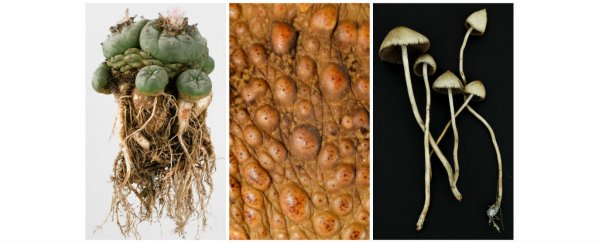New research has found that psychoactive substances were widely used by ancient Mesoamerican civilisations in order to make sense of the world around them.
Led by neurologist Francisco Javier Carod-Artal from the Hospital Virgen de la Luz in Cuenca in Spain, the study found that pre-European civilisations in Mesoamerica used mind-altering substances for medical reasons and religious rituals. Mesoamerica is a region in southern North America defined by cultural similarities and extending from central Mexico to Belize, Guatemala, El Salvador, Honduras, Nicaragua, and northern Costa Rica. Within this region, a number of pre-Columbian societies dominated until the 15th and 16th centuries, when Spain colonised the Americas.
The study also found that indigenous communities living in this region are still using some of these same substances. "In many rural and traditional communities with limited access to the modern health system, many healers are taking care of the health in the native communities," Carod-Artal told Agata Blaszczak-Boxe at LiveScience. "Seizures, migraine, depression, and other neurological and mental health disorders are treated in the context of ritual ceremonies with some of these drugs."
According to Blaszczak-Boxe, during its peak from 250 B.C. to A.D. 900, the Maya consumed a special drink called Balché as part of their group ceremonies, which is a mixture of honey from the region's native stingless bees and bark extracts of a flowering legume plant from the genus Lonchocarpus. These bees fed on a variety of morning glory that contained a psychedelic alkaloid called ergine, which rendered the drink mildly intoxicating.
Carod-Artal also found that ritual alcohol enemas were performed and several other mind-altering substances were consumed to quickly bring on intense trance-like states that the users believed would help them communicate with the spirits regarding life-changing events such as bad weather, harvests or fortunes, or episodes of serious illness or violent conflict.
He also found that several Mesoamerican civilisations, including the Olmec, Zapotec, Maya and Aztec peoples, used the peyote cactus (Lophophora williamsii), which contains the naturally occurring psychaelic alkaloid, mescaline. "Ritual use of peyote in the Americas dates back more than 5,000 years, to prehistoric times," according to the report published in the journal Neurología, in order to induce "colourful visual hallucinations, sensation of weightlessness, and altered perception of time and space".
Blaszczak-Boxe reports that traces of mescaline has been found in modern times in regions of Mexico and Texas where indiginous communities live, suggesting that it still holds cultural significance, thousands of years later.
Carod-Artal's study revealed that 3,500 years ago, civilisations in the Valley of Mexico and in parts of Central America also consumed more than 50 species of mushroom belonging to the genus Psilocybe because they contain the psychedelic compound, psilocybin. The seeds of flowering ololiuhqui plant (Turbina corymbosa) were also popular, because they contain ergine.
"The skin of the toad Bufo sp. contains bufotoxins with hallucinogenic properties," the report continues, "and was used since the Olmec period [from 400 BCE to about 400 BCE]. The jimson weed (Datura stramonium), wild tobacco (Nicotiana rustica), water lily (Nymphaea ampla) and Salvia divinorum were used for their psychoactive effects. Fungal stones dating from 3,000 BC have been found in ritual contexts in Mesoamerica."
Source: LiveScience
